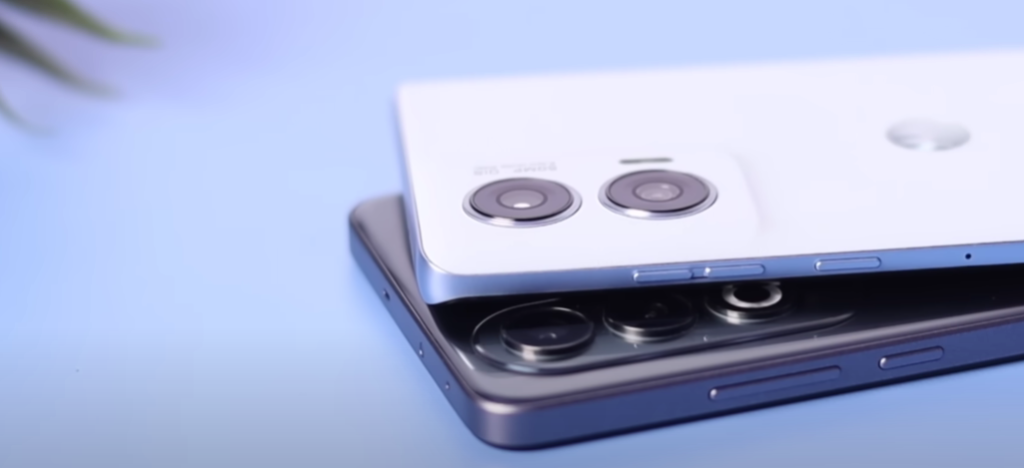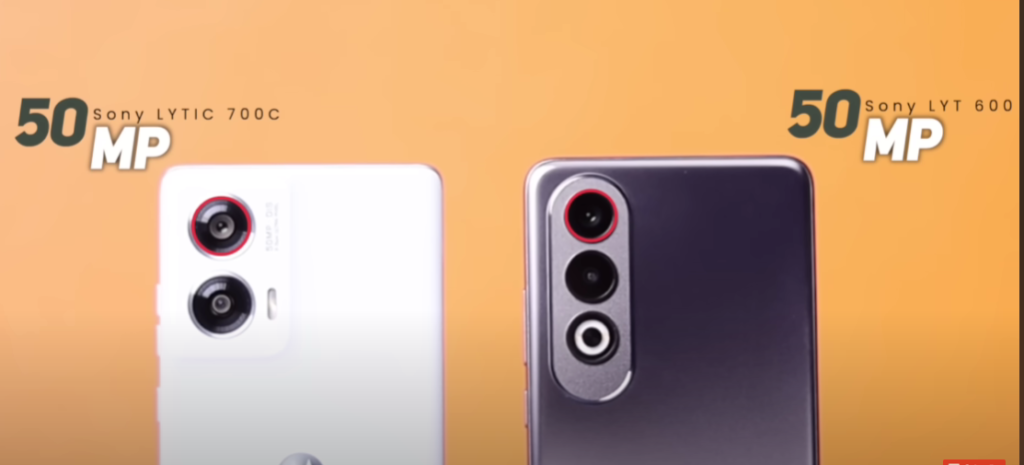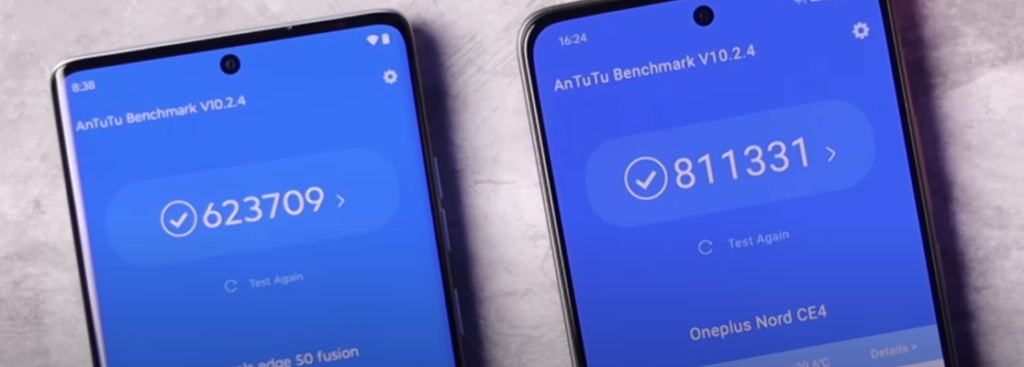Comparison of Moto Edge 50 Fusion VS OnePlus Nord CE 4 Lets see which one is better..
Contents

In my opinion, both of these phones offer one of the best software experiences. Under 25,000 INR, they are very balanced phones. One is the Moto F50 Fusion and the other is the OnePlus Nord CE 4. Which one should you choose between the two? Let’s find out. If you are here for the first time on this channel, my name is Private, please subscribe. If you like the video, let’s get into the pricing first.
The Moto offers the 8GB/128GB variant for under 23,000 INR. The OnePlus offers the 8GB/128GB variant for under 25,000 INR. Additionally, the Moto gives you the 12GB/256GB variant under 25,000 INR, making it a good value for money in terms of storage options. Both phones have done a good job with box contents, providing everything you need without requiring additional purchases, which is a nice touch.
Smartphone Design

In terms of design, this depends on personal preference. Both phones have a clean look on the back, with OnePlus having an even cleaner look, though it does pick up fingerprints easily. Moto features a vegan leather back with a slight texture, giving it a matte finish and a good grip in hand. When viewed from the side, OnePlus feels a bit thicker with flat edges, while Moto has a thinner side frame with curved edges, fitting well in hand and being lighter.
The OnePlus weighs around 184 grams, whereas the Moto is around 177 grams, making it lighter. Keep in mind that OnePlus offers a 500 mAh larger battery. Design preferences vary from user to user, but when it comes to build quality, some clear differences emerge. The OnePlus has Panda Glass protection on the display, while the Moto features Gorilla Glass 5. Furthermore, Moto offers an IP68 rating, meaning it can be submerged in water without worry, while OnePlus has an IP54 rating, protecting against normal water splashes.
Both phones have a punch-hole display, but the OnePlus has a flat display, whereas Moto’s is curved. Since both are OLED, watching content on either phone is enjoyable with good color reproduction and deep blacks. However, OnePlus supports HDR, which Moto does not. Both phones have in-display fingerprint scanners that are quite fast.
The Moto supports a 144 Hz refresh rate, while the OnePlus offers 120 Hz. Both refresh rates are stable and provide a smooth experience across apps. In terms of brightness, the Moto reaches up to 1600 nits, making it more visible outdoors compared to OnePlus’s 1100 nits. Sound quality is another area of difference. Both phones have done well, featuring dual speakers, which means both have two speakers.
But you’re getting more with the Moto. It also features Dolby head tracking and supports high-risk audio. This enhances the sound quality significantly. In terms of software, it also has a slight edge. When it comes to update support, Moto takes the lead. This time, they have promised three major updates and security updates for four years. In contrast, OnePlus promises two major updates and three years of security updates. Moto has made a promising commitment, and we hope they follow through. We also hope OnePlus addresses the green line issue in their updates.
OnePlus has typical features like app lock, dual apps, and app hiding. Similarly, Moto also includes a secure folder for app lock, dual apps, and app hiding. In terms of software experience, both offer the best. However, Moto provides a slightly cleaner software experience, leaning more towards stock Android. When I used the global search on OnePlus, ads and app suggestions appeared, which is not the case with Moto. Overall, both offer a clean and good software experience.
Smartphone Camera

Now, let’s talk about the camera, an important feature. Both phones come with a 50 MP main camera using Sony sensors. The Sony sensor in Moto is slightly better. It uses the IMX 700 series sensor, which offers an 8 MP ultra-wide camera, whereas OnePlus has a 13 MP ultra-wide camera. Moto also offers macro mode. Comparing the main cameras, you’ll notice the difference in details; Moto provides more detail when you zoom in on photos. The biggest noticeable difference is in the uniform light distribution. Even in challenging lighting conditions,
Moto manages to maintain a uniform light, especially in portrait shots. Moto offers support for three different focal lengths, unlike OnePlus. This allows you to take various types of shots from the same position, providing an immediate benefit. Both phones perform well in edge detection for portrait shots, but Moto has implemented it slightly better with its zoomed-in portrait shots.
In low-light conditions, both phones produce bright images with good details, so no complaints there. However, there are some issues with video quality. While both can record in 4K, Moto’s video is noticeably more stable. This could be due to Moto’s “Horizon Lock” feature, which maintains the video’s angle regardless of phone movement, improving stability through software. In wide-angle shots, the difference is also apparent. Moto manages to keep the light more balanced, as seen in the main camera, providing better face control and uniform background lighting. In some OnePlus photos, the face appears quite dark.
The Moto’s selfie camera is superior, boasting a 32 MP sensor compared to the OnePlus’s 16 MP sensor. I noticed that the skin tones on the OnePlus tend to have a reddish hue, which I didn’t particularly like. In terms of detail, the Moto offers more. Both phones perform well in edge detection for portrait shots, but the difference in details is more pronounced in low-light conditions, where Moto delivers more detail overall. Although both cameras provide bright images,
Moto stands out with better details. For daytime skin tones, Moto is better, and the difference is even more noticeable in video quality. OnePlus can only shoot 1080p with the front camera, while Moto can shoot 4K videos with the front camera, and these videos are quite stable. Moto has clearly focused on the camera, which is evident in both the H50 Pro and H50 Fusion models.
Smartphone Performance

You might prefer the Moto H50 Future’s camera, but performance is another important aspect to consider. Which one performs better? Both phones have done well with their Snapdragon processors. The Moto has the Snapdragon 7S Gen 2, while the OnePlus has the Snapdragon 7 Gen 3 processor. Looking at the scores, it’s clear that the OnePlus scores higher. But does that matter to you? It’s a bit surprising. We first tried normal tasks, launching small apps back-to-back on both devices side-by-side. The Moto generally launched small apps faster, giving the impression of more optimized performance. So, in normal tasks, you won’t feel much difference.
We were more surprised when we launched bigger games. First, we launched BGMI, and the Moto was ahead. Then, we launched COD, and again, the Moto was ahead. Both phones support HDR Extreme graphics in COD.
Your first question might be: why does the Moto score lower but perform better in many tasks? It’s kind of doing the same work. In terms of graphic support, there is a difference, and yes, it will be noticeable because the OnePlus is more powerful. We edited the same video in KineMaster on both phones and exported them at the same time, and the OnePlus rendered it faster.
From all these tests, it’s clear that the Moto provides highly optimized performance, but the OnePlus excels in very heavy tasks. However, if you need to do very heavy tasks, you can find gaming phones in this price range that perform even better. Regarding battery life, both processors are 4nm, so you’ll get excellent battery life from both. But the OnePlus has a 5500 mAh battery with a 100W charger in the box, while the Moto has a 5000 mAh battery with a 68W charger in the box. With both having 4nm processors, you don’t need to worry much about battery life. But yes, OnePlus provided a bigger 5500 mAh battery and a faster charger this time.
Smartphone Network

In terms of network, both have stable 5G. However, the Moto supports 15 5G bands, whereas the OnePlus supports 7 5G bands, and the Moto also has NFC support.
For More such like blog visit here :- Click Here
Thanks for Reading..
